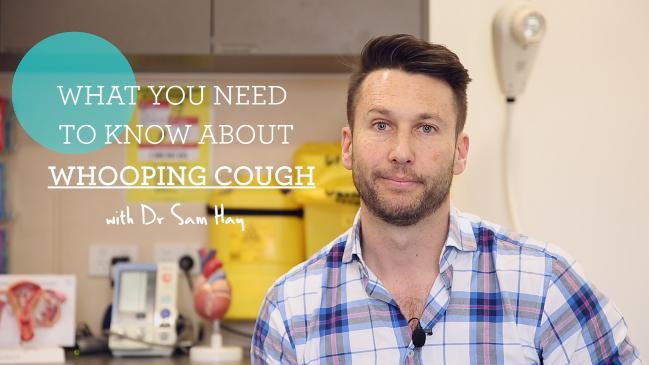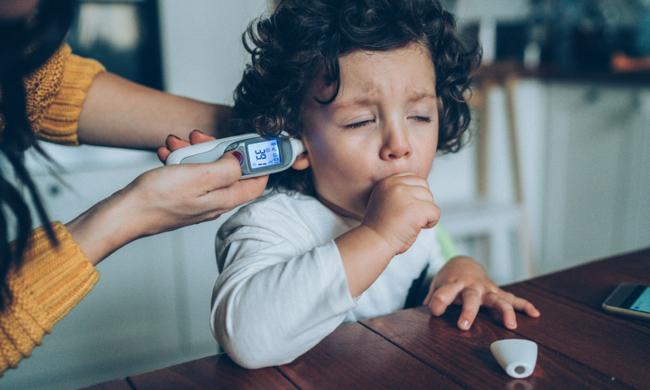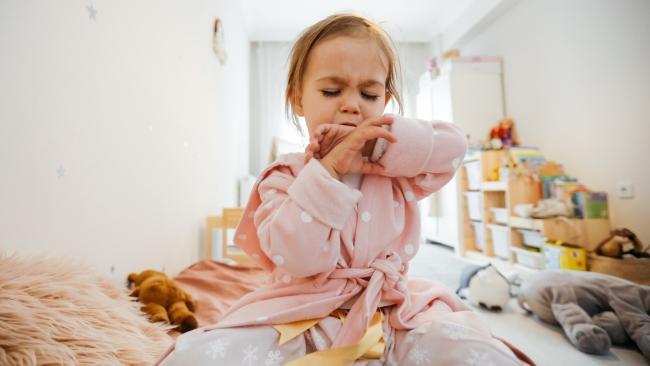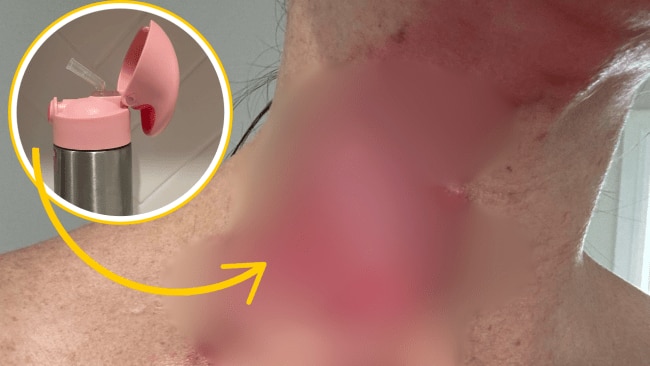Dry, rattly, barking, whooping: How to decode a child's lingering cough
When is a cough normal and when is it a sign of something more sinister?

Lifestyle
Don't miss out on the headlines from Lifestyle. Followed categories will be added to My News.
“Healthy children may cough naturally and normally on a daily basis - one study even reported healthy kids can have an average of 11 cough episodes every day,” Dr Sam Hay explains.
“In a nutshell, a cough is triggered by the irritation of cough receptors that exist not only in the lining of our throat and airways, but other spots. We also have these receptors in our ears! That's why when you scratch your ear hard, or the doctor looks into it, you sometimes have a big cough.”
Coughing can be good for kids
It is an important defence mechanism for the body. Cough protects bubs from sucking in and swallowing foreign bits and pieces, and it helps to clear mucous from deeper in the lungs.
“It’s a new cough you have to keep an eye out for,” explains Dr Sam.
The most usual cause of a new cough in our kids is the common cold – a viral upper respiratory tract infection. The little bugs can directly infect the airways stimulating a cough. Alternatively, all the extra mucous drains down the back of the throat from the nose, pooling in the large airways and periodically causing a cough.
Want to join the family? Sign up to our Kidspot newsletter for more stories like this.

How to tell the difference between a normal cough and a sinister one
“It’s all this extra mucous pooling that tends to make cough worse at night,” Dr Sam explains. “Lying down flat stops the natural drainage process making it all worse. That’s why propping the cot or bed up works so well. Saline drops in the nose work a treat too, they loosen all the snot up, and are best given just before you feed so all the snot gets sucked away.”
“Many parents ask about cough mixtures, and my standard reply is always horses-for- courses! They work for some little ones, don’t for many. But, they are definitely not safe for young babies.”
So what about the cough that lingers, that my child still has for weeks once the cold has gone? “We call this a post-infective cough. The body clears the virus and the kids perk up – becoming well, but the cough hangs around. Obviously we look for sinister causes, but usually all that is needed is reassurance and time. Elevating the bed, steamy showers, and saline drops for the nose can work wonders as well,” says Dr Sam.
So what makes a dangerous cough?
This is where we need to look at the much bigger picture – how old is your little one, how sick are they, how hard it is for them to breath, what’s their temperature, and many other clinical signs.
“We really need to see your child quickly if they are flat, listless, and struggling with their breathing,” urges Dr Sam.
The key signs of struggling to breath are breathing quickly, tugging at the windpipe, flaring of the nostrils and drawing in at the ribs.
RELATED: App outperforms doctors at diagnosing coughs

RELATED: Is it COVID or ‘just a cold’?
Newborns' coughs are a tad trickier
Baby’s gag and cough reflex is super switched on to give them every possible protection, so all babies will have a cough here and there throughout the day. Feeding is new and complex for them, all that milk is sloshing round the back of their throat, so its inevitable that a little will go down the wrong way.
“But this should only happen occasionally” says Dr Sam, “so if a cough occurs consistently, baby isn’t thriving or settling, and especially if they are struggling to breath, then they need a check up pronto.”
With an ongoing cough in a newborn, consideration needs to be given to congenital malformations, such as floppy upper airways (known as tracheobronchomalacia). There could also be little connections between the airways and the oesophagus which cause food to enter the lungs (known as a fistula), or even chronic lung disorders such as cystic fibrosis.
“Thankfully these conditions are rare, but can sometimes be a little tricky to pick up,” Dr Sam explains. “It's very important to see our precious newborns quickly if there is an ongoing cough.”
Listen and learn about your child's cough
While the mere sound of a cough is not enough evidence alone to make a diagnosis, listening to the type of cough can give you some clues as to what’s going on.
Fits of coughs that come and go, especially with a loud noise as the child breathes in called a ‘whoop’ is usually seen with pertussis (or whooping cough). Unfortunately poor vaccination rates in Australia have seen a resurgence of pertussis in recent years.
A dry irritated cough, especially at night, associated with wheeze could be asthma. A wheeze is a fine whistly noise, usually heard when they breathe out.
A persisting wet cough, especially with big globs of phlegm coming up points more to an infection, either acute or chronic.
Like solving a good mystery, it is important to look at all the evidence, not just one part. And your doctor can help ask the right question to work out if your little one’s cough is good or evil.
This article was first published in August 2016 and updated in May 2023.
More Coverage
Originally published as Dry, rattly, barking, whooping: How to decode a child's lingering cough




